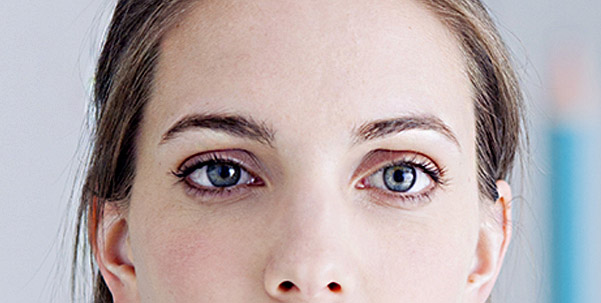Strabismus

Strabismus is a condition in which the eyeballs point in different directions. It typically involves a lack of coordination between the extraocular muscles that prevents bringing the gaze of each eye to the same point in space and preventing proper binocular vision, which may adversely affect depth perception.
Strabismus is equally common in boys and girls. It sometimes runs in families.
Adult strabismus patients have negative effect on their self-image and problems with work, school and sports because of their strabismus.
To correct their inability to focus properly, many adults with strabismus have to tilt or turn their heads when focusing. They also are unable to make direct eye contact with both eyes when looking at people.
It is estimated that up to 5 percent of all children have some type or degree of strabismus. When strabismus is congenital or develops in infancy, it can cause amblyopia, in which the brain ignores input from the deviated eye. Strabismus can lead to a permanent weakening of vision in the strabismic eye called amblyopia sometimes referred to as lazy eye.
Nearly four in every 100 adults have strabismus. It can be a disorder of the brain or a disorder of one or more muscles that move the eyes.
Strabismus may be classified as unilateral/constant if the same eye constantly turns in or out, or alternating/intermittent if the eye only turns in or out sometimes. Most adults with strabismus have had the condition since childhood.
Acquired strabismus begins in adulthood due to medical problems such as diabetes, thyroid disease, myasthenia gravis, brain tumors, head trauma, or strokes. Occasionally, a cataract or a tumor in the eye can cause strabismus. These conditions may require urgent medical attention.
The vast majority of people with strabismus, however, have none of these problems Occasionally, misalignment of the eyes can occur after an eye surgery such as cataract surgery or retinal surgery.
Adults with strabismus may experience eye fatigue, double vision, overlapped or blurred images, reading difficulty and a pulling sensation around the eyes
There are two tests commonly used to diagnose strabismus. With a cover test the doctor covers each eye one at a time while the patient is looking at an object in the room. Depending on how the eye shifts when the cover is moved, strabismus can be diagnosed.
Flashlight can be used to test the alignment of the eyes. As the patient looks at the light, the doctor can see a reflection on the front surface of your eye. If the eyes are properly aligned, the reflection will be in the same spot of each eye. If strabismus is present, the reflection from the light will not be in the same spot of each eye.

Adult strabismus has different causes. Depending on the cause, strabismus can be treated several different ways.
Eye muscle surgery is the most common treatment for strabismus. Typically, strabismus occurs when the muscles surrounding the eyes act as though they are either too stiff or too weak. Your eye surgeon can loosen, tighten, or reposition certain eye muscles so that the eyes will be able to look straight. More than one surgery may be needed.
Eye muscle exercises can be helpful in treating a form of adult strabismus in which the eyes cannot align themselves for close work or reading. The eye exercises help re-train the eyes to focus inward together.
Eyeglasses with prisms can correct mild double vision associated with adult strabismus. A prism is a clear, wedge-shaped lens that bends, or refracts, light rays. For adults with mild double vision, the prism eyeglasses realign images together so that the eyes see only one image.
If an overactive eye muscle is the cause of the strabismus, Botox injections can help. Botox is a drug that, when injected in small amounts, temporarily paralyzes muscles. It can last several months and may even result in a permanent change. in eye alignment.
Last Updated: October 23, 2024



























